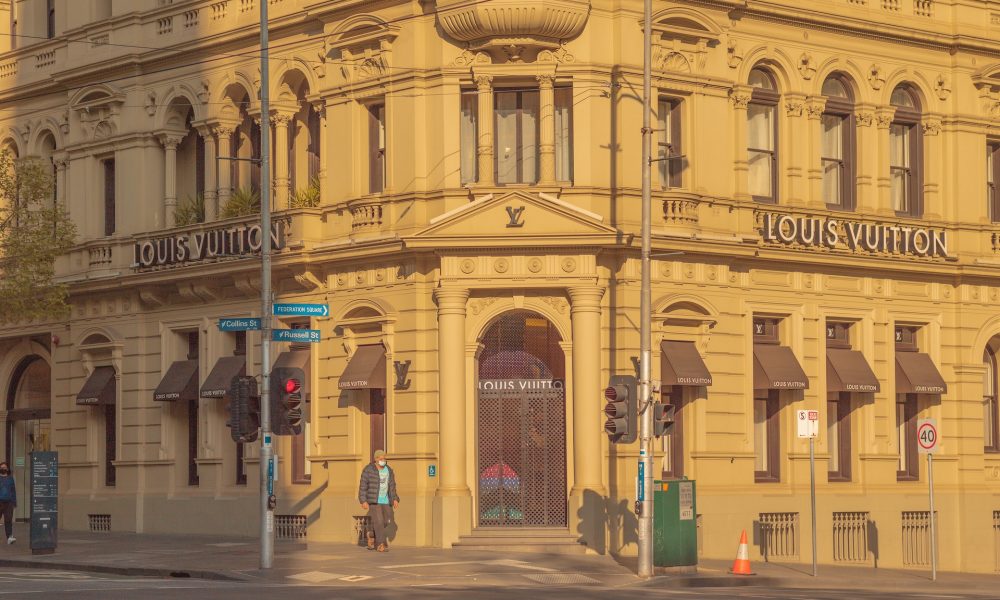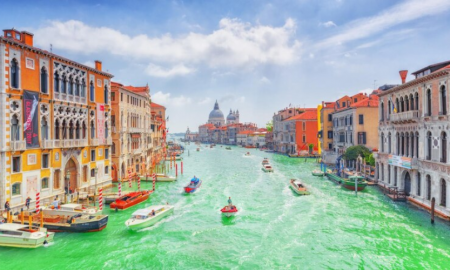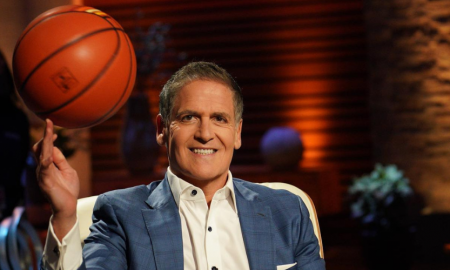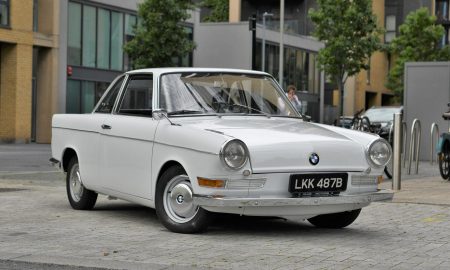
How LVMH Became a $500 Billion Luxury Empire

LVMH Moët Hennessy Louis Vuitton is a name synonymous with luxury and opulence. The brand has crafted not just products but a legacy that resonates with exclusivity and prestige. From its inception to becoming the first European company to cross a staggering $500 billion market value, LVMH’s journey is a tale of strategic acquisitions, visionary leadership, and an unwavering commitment to excellence.
LVMH’s journey began with the merger of two French luxury goods companies: Moët Hennessy, a renowned cognac manufacturer. And Louis Vuitton, a leading luxury fashion house. This fusion, in 1987, was more than a business transaction. It was the melding of centuries-old legacies in fine wine and leather goods.

Alex / Pexels / The founding of LVMH dates back to 1987 when the luxury goods company kicked off in Paris.
Bernard Arnault: The Mastermind Behind LVMH
Enter Bernard Arnault, the chairman and CEO of LVMH, whose name has become synonymous with the luxury conglomerate. Arnault’s vision and strategic prowess have been pivotal in expanding LVMH’s brand portfolio. His approach? Acquire and nurture, rather than build from scratch. This strategy has not only saved time but also tapped into the established prestige of acquired brands.
Today, LVMH boasts a remarkable portfolio of 75 brands across various luxury segments, including fashion, leather goods, perfumes, cosmetics, watches, jewelry, and select retailing. Each brand under the LVMH umbrella retains its unique identity and heritage, yet benefits from the conglomerate’s resources and expertise.

Bernard Fans / IG / The sitting CEO and chairman of LVMH, Bernard Arnault, is the mastermind behind the fame and success of the luxury empire.
Acquiring Giants: The Tiffany & Co. Story
A recent highlight in LVMH’s acquisition saga is the purchase of Tiffany & Co. in 2021. This acquisition, worth $15.8 billion, was not without its drama. Amidst a global pandemic, LVMH and Tiffany & Co. entered a bitter price dispute, eventually settling at a slightly reduced price. However, this deal was not just about adding another jewel to its crown. It was a strategic move to strengthen LVMH’s position in the American luxury market.
While LVMH respects and preserves the heritage of its brands, it is not averse to innovation. The company continually adapts to changing market dynamics. Thus, incorporating modern marketing techniques, embracing digital platforms, and engaging with younger demographics without diluting the essence of luxury and exclusivity.

Joel / Unsplash / In 2021, LVMH under the leadership of Bernard Arnault, acquired Tiffany & Co.
LVMH’s ability to post record revenue year after year, even amidst global economic fluctuations, is a testament to its resilient business model and adaptable strategy. The COVID-19 pandemic saw LVMH navigate through uncharted waters, emerging stronger with strategic acquisitions and a focus on digital transformation.
Sustainability: The New Luxury Frontier
In a world increasingly conscious of environmental and social impacts, LVMH has not remained aloof. The conglomerate actively engages in sustainable practices, understanding that luxury today is not just about the finesse of products but also the ethics behind their creation.
So, the story of LVMH is more than a tale of business acumen. It is a saga of how luxury – when meticulously crafted and strategically managed – transcends mere products to become a symbol of timeless elegance and unrivaled success. With a blend of traditional values and modern dynamics, LVMH continues to define and dominate the luxury landscape, setting benchmarks that others aspire to reach.
More in The Jet Set
-
How to Lock In a ‘Good’ APR on Your Personal Loans?
When it comes to borrowing, understanding the intricacies of the Annual Percentage Rate (APR) can feel like deciphering a secret code....
March 13, 2024 -
How to Find the Best Personal Loan With Easy Monthly Payments in 2024
A personal loan is an amount of money borrowed from a financial institution, which you pay back in regular monthly payments...
March 8, 2024 -
Why Italy Tops the List for Solo Adventurers
Forget the guidebooks and ditch the group tours. If your soul craves an adventure that’s uniquely yours, then pack your bags...
March 3, 2024 -
From Talking Cars to AI: The Latest Car Tech at CES
Imagine having a chatty companion on your next road trip. One that tells jokes, remembers your preferences, and even helps plan...
February 24, 2024 -
Know the Pros & Cons of Personal Loans Before Applying!
Are you eyeing a personal loan, perhaps to consolidate debt, finance a home renovation, or cover an unexpected expense? Before you...
February 17, 2024 -
What Are Some Major Benefits of a Business Bank Account & How to Open One?
A business bank account is not just a fancy accessory. It is a necessity. Imagine your business as a high-performance vehicle....
February 7, 2024 -
Navigating the Ties Between Love, Living Together, and Financial Security in Retirement
Picture this: you’re nearing retirement, a time for relaxation and enjoying the fruits of your life’s hard work. But here’s a...
January 29, 2024 -
Top 5 Superyachts of 2022
In a world where social distancing became the buzzword, the allure of superyachts took on an even more glittering appeal in...
January 23, 2024 -
Mark Cuban’s Proven Tips for Business Success
Dive into the dynamic world of entrepreneurship with the maverick mind of Mark Cuban, a serial entrepreneur whose $4.6 billion fortune...
January 20, 2024















You must be logged in to post a comment Login